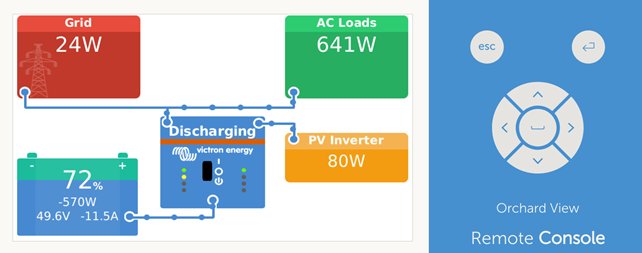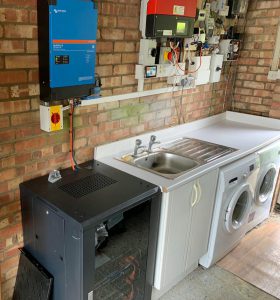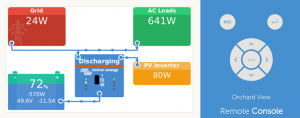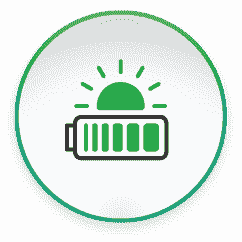[We have the pleasure to publish here an article from one of our customers, Charles Brookson, describing his experience with one of our Battery Backup systems]
We’ve lived in the countryside for many years, and our power comes over a few miles of overhead wires. Both mine and my wife’s work have depended on a good electricity supply for our IT, and over the years we’ve tried a number of solutions.
We did have a generator which did work well, but required quite a bit of looking after, and was noisy at night. We also had 4kWh of solar panels installed, right at the end of the good Feed in Tariff (FIT), which paid us a small amount each year.
I have always monitored my energy consumption with a Raspberry Pi using OpenEnergy kit, and this showed me that I was feeding back a lot of surplus solar (which I was still being paid for by FIT), which I could store on site. I do find it strange I am paid whether I use the FIT myself, or send it back to the grid! The answer might well be a Battery system.
I looked at various solutions, but I was worried about the security of them. Most depended on a back-end system in the Cloud, and the thought of the security issues and lack of control of the Internet when it was not working, worried me (I’d also with the same concerns with a micro inverter Solar system, as these seemed to depend on distant servers, and gone for a slightly dumb DC Solar system. I’ve always been involved in Cybersecurity, so have all these strange worries!).
I asked Tanjent Energy for a quote, and went for a Victron Multiplus system, with 3 US3000 Pylontech batteries (with space for another two giving me a possible total 17.5 kWh) in 2020. This was installed neatly, and worked as expected. We’ve had a few power cuts, and have had power to run our house and heating when storms (or in one case a local tractor) have interrupted our power. I found that my Solar inverter was capable of charging the batteries when the power was off (not all inverters can do this, but when you have a power cut it’s good that they continue working with the batteries).
We use an Economy 7 tariff, which is used to power our electric car at the low tariff time in the early morning, and store some power in the batteries. I have found in the winter months we can last all day on power stored on the batteries on Economy 7, when I don’t have a lot of solar generation, which effectively has given us cheap electricity during the day. In the summer we store surplus solar energy. The system has proved so good at saving money that I have added two extra batteries.
With the recent increase in electricity prices, the pay back on the cost of installation is becoming much better! It seemed a bit of a gamble at first, but not now. I guess with us working from home more, and more often severe weather, a stable power supply is useful. It is worth doing the calculations to see if it could work for you.
Charles Brookson, February 2022







